Photos
MDC2 Enlist Prof Dev Brief – 23 Aug 17 : PowerPoint Presentation
MDC2 Symposium Opening Brief – 24 Aug 17 : PowerPoint Presentation
The Multi-Domain Command and Control (MDC2) Symposium, which was master-minded by co-chairs Henry Baird and Kristen Christy, took place at the Antlers Hotel in Colorado Springs on 23 and 24 August 2017. A host of volunteers from the Sijan Chapter planned and coordinated for months in advance to secure sponsors and high impact participants. Corporate Sponsors included Lockheed Martin, Northrup Grumman and Deloitte. The event included numerous high ranking active duty and retired officers, plus government and industry experts briefing and participating in panel discussions. Day One focused on professional development for Air Force enlisted personnel. Day Two was oriented toward aerospace corporations, as well as active duty military.
Traditionally the coordination of a nation’s armed forces involved only naval and land forces, but the deployment of military aircraft necessitated the integration of air forces as well. Satellites and ICBMs added space as another warfare environment. Proliferation of computer network infrastructure for civilian and military use, along with the vulnerability of these systems to hacker attack made the digital universe yet another venue for military operations. These six separate domains include: air, land, maritime, subsurface, space and cyber. The Air Force has the dominant air arm; it “owns” space operations; and is an important component in the new Cyberwarfare Command, resulting in greatly expanded responsibility for operations across the newer domains.
BGen B. Chance Salzman, the Deputy Chief of Staff for Operations, was tasked by Chief of Staff General Goldfein with developing a strategic plan for MDC2, a plan he briefed at the opening of MDC2 Day Two. He noted that there are new standoff threats based on emerging technologies across the spectrum of domains, and observed that future warfare would be multi-regional, high speed, and will have seams or interactions within and between all the domains. War winning will require an information advantage, high velocity decision making, creating complex adverse dilemmas for opponents, and finally the use of “self-healing” systems, which can spontaneously recover from attacks. The ultimate object of his MDC2 roadmap is to create an operational “pyramid:” with C2 at the top, leading edge technologies in the middle, and dedicated MDC2 operators at its base.
The Command and Control panel was moderated by Mr. Blake Linder and Mr. Brian McLean (For a complete list of all panel members, visit the Lance P. Sijan Chapter website). The panel addressed the critical requirement for speed in MDC2 decision making and the necessity for improved technology, a recurring theme throughout the symposium. Another important goal is to change the military “culture” of placing operators into specific “kinetic vs non-kinetic” career fields, instead creating warriors proficient across the domain spectrum.
The second panel, moderated by Group Captain Blythe Crawford (UK) and Lt Col Eric Frahm, explored technology and along with security issues. MDC2 will require exploitation of nascent emerging technologies to facilitate communications and automated decision making, while maintaining security and redundancy. Examples included Cloud Computing presently being modified for military applications and Quantum Computing with the potential for improved data management and advanced AI for MD operations. Relating to technology was the topic of security. Compartmentalization of classification for special projects plus over classification prevents operators and commanders from having information they need to navigate MD conflicts. Security is vital with multi-linked networks; emerging technology such as “polymorphic attack surfaces” may help prevent incursions without denying access to users.
General John “Jay” Raymond, Commander, Air Force Space Command, offered remarks on the importance of fixing existing systems, as well as well as balancing acquisition risks against operational risks, with emphasis on the latter. After Q&A with General Raymond, Maj Gen Dale Meyerrose (Ret) moderated a panel discussion of “The View from the Trenches,” emphasizing new thinking, training, technology and methods of execution.
Ms. Sheryl Thorp, Special Assistant to the Commander, Air Force Life Cycle Management Center, and Col Jeff Burdette moderated the panel discussions of support for MDC2 with emphasis on acquisition reform. All agreed the current defense acquisition bureaucracy is an industrial age process increasingly obsolete in the modern environment of rapid change and newly emerging technologies. It is deficient for software intensive systems, and many procurement regulations are outdated or unnecessary, causing delays and driving up costs. Two key concepts emerged: a proposal for an earlier military-partnership, both to identify emerging capabilities and to obtain a better sense of what feasible; secondly, a proposal for a more agile and flexible purchasing process that is less adversarial and recognizes that reaching 90% of a desired outcome is better than no outcome.
The panel discussions concluded with moderator BGen Mark Weatherington leading a discussion on MDC2 with joint and coalition forces. Besides seams between domains, more seams exist between different services and allied nations. Again, security is an issue. The routine use of the “no foreign” designation obstructing coordination with allies.
The symposium wrapped up with General (Ret) Gregory “Speedy” Martin summarizing the need for “domains on demand” and “seams across domains and services and allies.” He also noted recurrent dilemma of deciding whether to “bolt on” new capabilities to an existing system verses developing all new architecture. He recounted the legacy of Air Force fighter pilot John Boyd and his OODA loop: observe, orient, decide, act (repeat-faster!) as a model for a culture of constant adaptation to a rapidly changing environment is at the heart of the MDC2 challenge.
The symposium presented a new vision for the future of war. The Air Force, the US military and the nation are facing threats unprecedented since the Cold War. General Saltzman’s take on MDC2 laid out a plan to meet these threats. The challenge is to make this plan a reality.






0 Comments